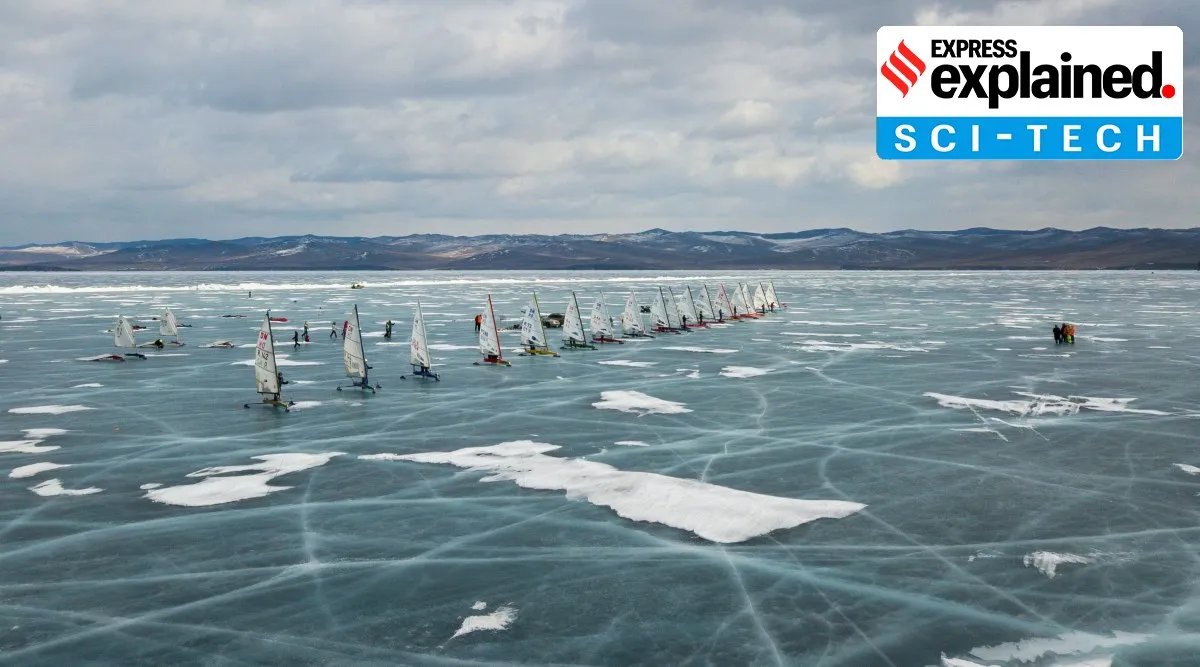Explained: What is a telescope doing inside the world’s deepest lake?

Late last week, Russian scientists launched one of the world’s biggest underwater neutrino telescopes called the Baikal-GVD (Gigaton Volume Detector) in the waters of Lake Baikail, the world’s deepest lake situated in Siberia.
The construction of this telescope, which started in 2016, is motivated by the mission to study in detail the elusive fundamental particles called neutrinos and to possibly determine their sources. Studying this will aid scientists’ understanding of the origins of the universe since some neutrinos were formed during the Big Bang, others continue to be formed as a result of supernova explosions or because of nuclear reactions in the Sun.
Newsletter | Click to get the day’s best explainers in your inbox
The Baikal-GVD is one of the three largest neutrino detectors in the world along with the IceCube at the South Pole and ANTARES in the Mediterranean Sea.
What are fundamental particles?
So far, the understanding is that the universe is made of some fundamental particles that are indivisible. Broadly, particles of matter that scientists know about as of now can be classified into quarks and leptons. But this only applies to “normal matter” or the matter that scientists know that five per cent of the universe is made up of. In their book We Have No Idea, cartoonist Jorge Cham and particle physicist Daniel Whiteson have said that these particles make up matter that accounts for only five per cent of the universe. Not much is known about the remaining 95 per cent of the universe, which is classified by the authors into dark matter (27 percent) and the remaining 68 per cent of the universe of which scientists have “no idea” about yet.
But in the universe scientists know about, exploration in the field of physics so far has led to the discovery of over 12 such quarks and leptons, but three of these (protons, neutrons and electrons) is what everything in the world is made up of. Protons (carry a positive charge) and neutrons (no charge) are types of quarks, whereas electrons (carry a negative charge) are types of leptons. These three particles make what is referred to as the building block of life– the atom. In different combinations, these particles can make different kinds of atoms, which in turn make up molecules that form everything– from a human being, to a wooden chair, a plastic plate, a mobile phone, a dog, a termite, a mountain, a planet, water, soil and so on.
Why do scientists study fundamental particles?
Studying what humans and everything around them is made up of gives scientists a window into understanding the universe a better way, just how it is easy to grasp what a cake is once one knows the ingredients it is made up of. This is one reason why scientists are so keen on studying neutrinos (not the same as neutrons), which are also a type of fundamental particle. Fundamental means that neutrinos, like electrons, protons and neutrons cannot be broken down further into smaller particles.
So where do neutrinos fit in?
What makes neutrinos especially interesting is that they are abundant in nature, with about a thousand trillion of them passing through a human body every second. In fact, they are the second most abundant particles, after photons, which are particles of light. But while neutrinos are abundant, they are not easy to catch, this is because they do not carry a charge, as a result of which they do not interact with matter.
A website developed by the Fermi National Accelerator Laboratory in the US says that neutrinos are “a clue to new physics: ways of describing the world that we don’t know yet. They also might have unique properties that would help explain why the universe is made of matter instead of antimatter.” Just like the subatomic particles of the so-called “normal matter” can be classified into electrons, protons and neutrons, the subatomic particles that make up antimatter have properties that are opposite to the normal matter. While it is known that antimatter exists, we do not yet know why it exists or how different the properties of its subatomic particles are from those of normal matter.
One way of detecting neutrinos is in water or ice, where neutrinos leave a flash of light or a line of bubbles when they interact. To capture these signs, scientists have to build large detectors. An underwater telescope such as the GVD is designed to detect high-energy neutrinos that may have come from the Earth’s core, or could have been produced during nuclear reactions in the Sun.

“평생 사상가. 웹 광신자. 좀비 중독자. 커뮤니케이터. 창조자. 프리랜서 여행 애호가.”
